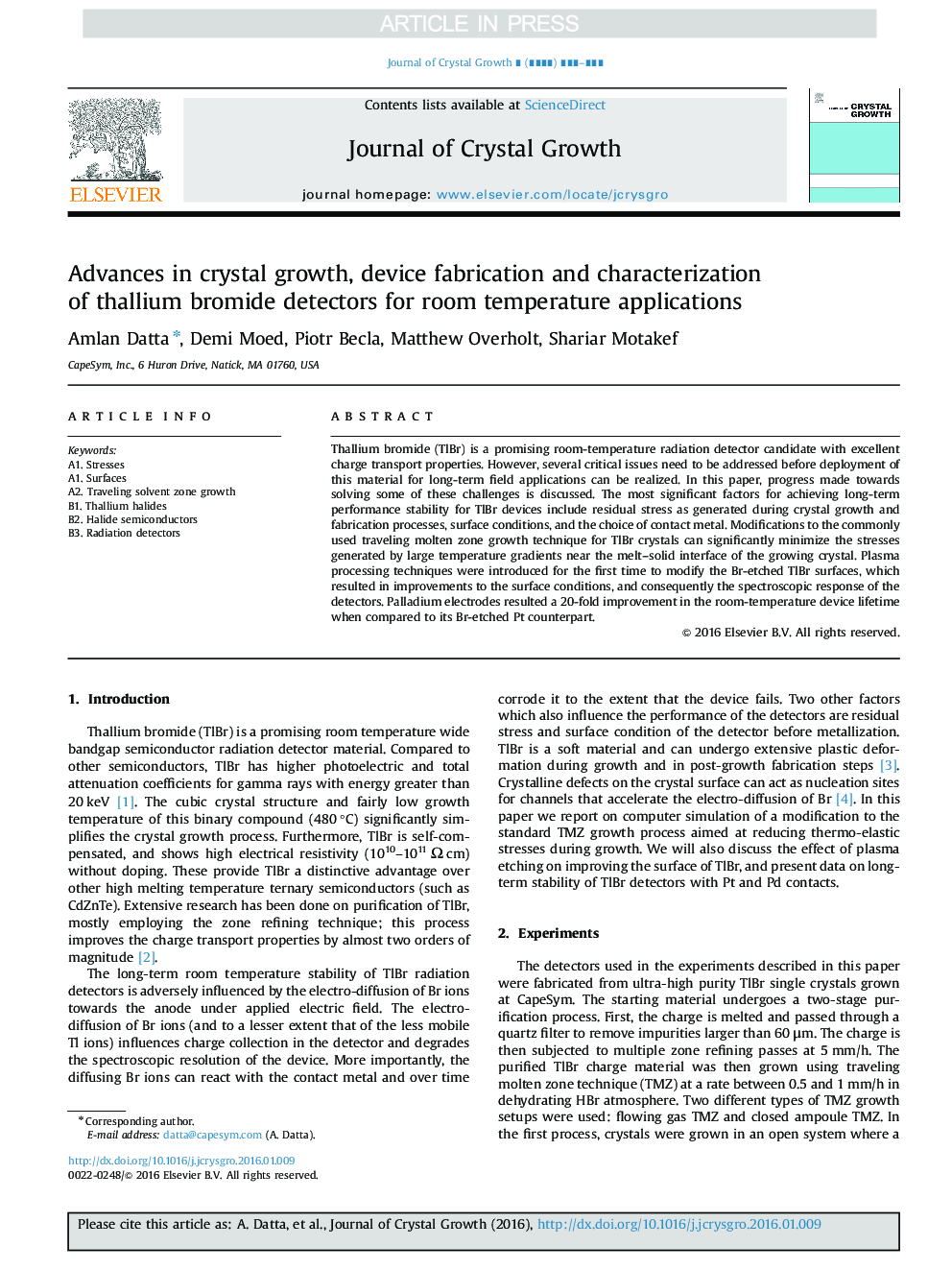| Article ID | Journal | Published Year | Pages | File Type |
|---|---|---|---|---|
| 5489892 | Journal of Crystal Growth | 2016 | 5 Pages |
Abstract
Thallium bromide (TlBr) is a promising room-temperature radiation detector candidate with excellent charge transport properties. However, several critical issues need to be addressed before deployment of this material for long-term field applications can be realized. In this paper, progress made towards solving some of these challenges is discussed. The most significant factors for achieving long-term performance stability for TlBr devices include residual stress as generated during crystal growth and fabrication processes, surface conditions, and the choice of contact metal. Modifications to the commonly used traveling molten zone growth technique for TlBr crystals can significantly minimize the stresses generated by large temperature gradients near the melt-solid interface of the growing crystal. Plasma processing techniques were introduced for the first time to modify the Br-etched TlBr surfaces, which resulted in improvements to the surface conditions, and consequently the spectroscopic response of the detectors. Palladium electrodes resulted a 20-fold improvement in the room-temperature device lifetime when compared to its Br-etched Pt counterpart.
Related Topics
Physical Sciences and Engineering
Physics and Astronomy
Condensed Matter Physics
Authors
Amlan Datta, Demi Moed, Piotr Becla, Matthew Overholt, Shariar Motakef,
